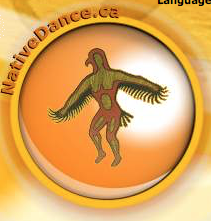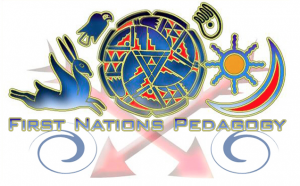1) A common theme I have noticed when reading responses this past week has been around the lack of authentic resources available to educators to aid in the integration of First Nations principles in our school curriculums. The following provides a link to a publication of fnesc (First Nations Education Steering Committee) and FNSA (First Nations Schools Association) titled, Authentic First Peoples Resources: K-9. This resource was published in 2011, but was updated this year (2016). This is a lengthy publication that provides “Resource Annotations” detailing each resource in terms of title, author(s)/editor/compiler, illustrator(s), publisher, reading level, applicable curriculum areas, themes and topics, publication date and number of pages. In addition to this, the “Resource Annotations” chapter also provides a description, list of titles in the series (if applicable), and features of the text (i.e., text is in both English and Sm’algyax). There is also an “Index of Resources” (starts on p. 109) that gives a quicker summary of each resource including the title, nation(s), grade(s), resource topics and themes.
Authentic First Peoples Resources. (2011, updated 2016). Vancouver, B.C.: fnesc and FNSA
Retrieved 2 October, 2016, from: http://www.fnesc.ca/wp/wp-content/uploads/2016/08/PUBLICATION-61460-FNESC-Authentic-Resources-Guide-2016-08-26.pdf
My next four links are to resources that discuss the connection between culture, language and well-being in Indigenous populations. I am becoming increasingly interested in and concerned with the profound impact that the loss of culture and language is continuing to have on the health and well-being of Indigenous populations. Studies, like the one by Oster et al. (2014) referenced below, have shown that “the intergenerational effects of colonization continue to impact the culture, which undermines the sense of self-determination, and contributes to diabetes and ill health.” My focus is around how we, as educators, can begin to help First Nations children and youth reconnect with culture and language, in hopes of increasing connections, but at the same time decreasing the intimidation and alienation (O’Sullivan, 2013) felt in Indigenous communities.
2) McIvor, Napoleon, and Dickie (2009) report that there is an increasing amount of evidence showing that the continuity of language and culture in Aboriginal communities contributes positively to the health and well-being of Aboriginal people. However, the loss of culture and language due to colonization has had, and continues to have, a profoundly negative impact on the health and well-being of the Aboriginal population. McIvor et al. report that “all indigenous languages in Canada are seriously endangered and most are at risk of extinction (Brittain, 2002; Shaw, 2001; Standing Committee on Aboriginal Affairs, 1990)” and “in the last 100 years alone, at least ten of Canada’s Aboriginal languages have become extinct (Norris, 1998).” Through their research, McIvor et al., found that there is hope in the form of “protective factors” to combat identified health issues, and that there is evidence that the use of languages and cultures contributes positively to the health and well-being of Aboriginal populations. The six themes that emerged were: land and health, traditional medicine, spirituality, traditional foods, traditional activities and language.
McIvor, O., Napoleon, A., & Dickie, K.M. (2009). Language and culture as protective factors for at-risk communities. Journal de la sante autochtone. Retrieved 10 October, 2016, from: http://www.naho.ca/jah/english/jah05_01/V5_I1_Protective_01.pdf
3) O’Sullivan’s (2013) article discusses issues around providing “culturally competent care” and a “culturally safe environment” for Aboriginal patients in our Canadian health care system. The article draws attention to the fact that many Aboriginal people “tend to avoid seeking medical care because of factors such as negative stereotypes and lingering racism.” O’Sullivan points out that health care professionals must be educated about cultural differences that exist, rather than assuming that all patients have the same basic needs and perspectives. Acknowledging Aboriginal knowledges and traditions, as well as showing empathy and respect, is essential in creating a safe and accepting environment for Aboriginal patients.
O’Sullivan, B. (2013). Considering culture in Aboriginal care. CMAJ, 185(1). Retrieved 10 October, 2016, from: http://m.cmaj.ca/content/185/1/E27.full.pdf
4) Oster, Grier, Lightning, Mayan, and Toth (2014) report their findings from a mixed methods (qualitative and quantitative data) study conducted in Alberta. Cree and Blackfoot leaders were interviewed, and data was collected from provincial and public sources representing thirty-one First Nations communities across Alberta. The data was used to determine if there was a link between cultural continuity and the prevalence of diabetes in First Nations communities. The findings were significant and showed a correlation between loss of language and culture and the prevalence of diabetes. Their powerful conclusion was “First Nations that have been better able to preserve their culture may be relatively protected from diabetes.”
Oster, R.T., Grier, A., Lightning, R., Mayan, M.J., & Toth, E.L. (2014). Cultural continuity, traditional Indigenous language, and diabetes in Alberta First Nations: a mixed methods study. International Journal for Equity in Health. Retrieved 12 October, 2016, from: http://equityhealthj.biomedcentral.com/articles/10.1186/s12939-014-0092-4
5) Jewell’s (2016) quantitative study provides an interesting analysis of data regarding the exposure and acceptance of Aboriginal languages in urban settings in Canada. Jewell discusses the fact that Indigenous languages are endangered, but that revitalization efforts are in effect in many communities. Jewell discusses the importance of language in the continuity of culture, as well as the effect of continuity of language and culture on the health and well-being of Indigenous people. Jewell draws attention to the fact that while an increasing number of Indigenous people have been moving to urban settings, the majority of language revitalization programs remain on-reserves (Baloy, 2011, as cited by Jewell), although language programs off-reserve are increasing. Jewell concludes that when there is exposure to Indigenous languages both inside and outside the home, an increased value is placed on the language. Jewell’s hope is that with increased value will come increased study, interest, and advocacy.
Jewell, E.M. (2016). Social exposure and perceptions of language importance in Canada’s urban Indigenous peoples. aboriginal policy studies, 5(2), pp. 99-113. Retrieved 13 October, 2016, from: https://ejournals.library.ualberta.ca/index.php/aps/article/download/25411/pdf




